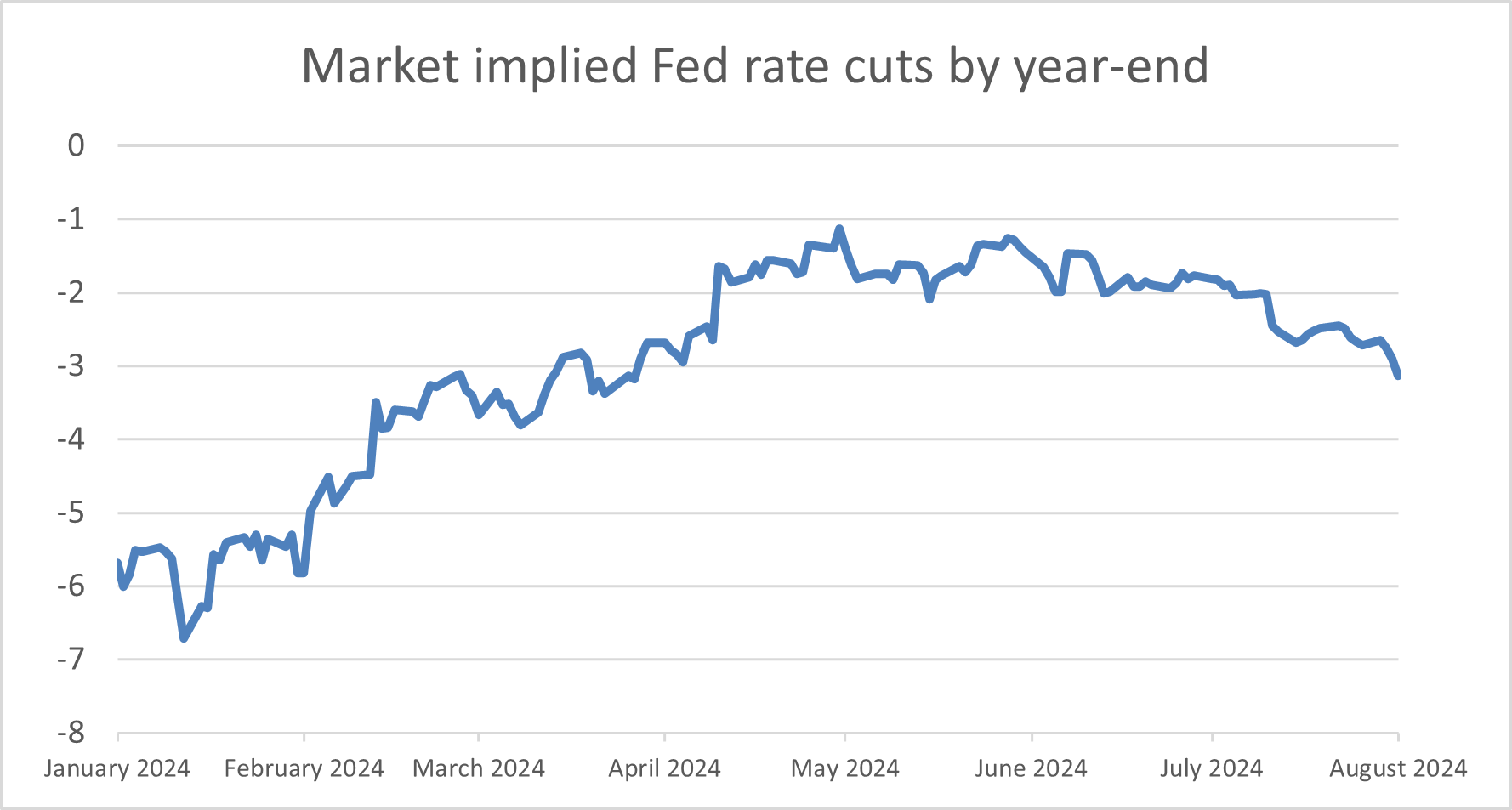
In the aftermath of the Russian invasion of Ukraine, western central banks became decidedly hawkish by initiating the fastest cycle of interest rate hikes in decades in an attempt to combat inflation. In contrast, Japan remained dovish, keeping interest rates low after decades of weak growth and deflation.
Over recent weeks, these roles appear to have reversed. Earlier this week, the Bank of Japan (BoJ) took steps to normalise their ultra-loose monetary policy by raising interest rates up to 0.25% from the 0-0.1% range previously, and Governor Kazuo Ueda indicated future rate hikes were on the cards. On the other hand, yesterday the Bank of England (BoE) took its first step in its rate cutting cycle, becoming the latest developed market central bank to lower rates.
In addition to raising rates twice this year, the BoJ also announced plans to curb purchases of Japanese government bonds, aiming to halve the number of purchases by early 2026.
After weakening to a 38-year low, the yen strengthened by 7% against the US dollar in July, as speculation of the BoJ’s action gathered steam. The yen remains meaningfully weaker this year which pushed import prices up, weighing on the Japanese consumers’ purchasing power. Japanese voters’ dissatisfaction with the government is becoming evident, as support for Prime Minister Fumio Kishida in June was at the lowest since he took office in 2021.1 (“What impact does inflation have on incumbents?”) To remain prime minister, he must stay on as president of the ruling Liberal Democratic Party (LDP), but his current term ends in September and it seems unlikely he will hold on.
As Japan engages in its interest rate hiking cycle, western central banks have begun to cut interest rates. On 1st August, the BoE voted to cut rates for the first time since 2020. In a finely balanced decision, they voted 5 to 4 to cut by 0.25%, bringing rates to 5%. In the press conference following the announcement, Governor Andrew Bailey remained ambiguous about future rate cuts, reiterating the BoE’s data dependence.
The BoE follows the steps of Sweden, Switzerland and Canada, with the Bank of Canada notably lowering its rate twice in just two months. We have commented previously of the power the Federal Reserve (Fed) wields. At its last meeting at the end of July, it met market expectations by providing the strongest indication that rate cuts are on the cards in September. This goes some way to explain how central banks are becoming increasingly confident about lowering interest rates. Fed Chair, Jerome Powell, said that while there was “no decision about future meetings”, he noted that the Federal Open Market Committee started to discuss rate cuts in the July meeting and said that if they receive the data they’re hoping to get, “then a reduction in the rate policy could be on the table at the September meeting.”2 He did not offer clarity on the speed of rate cuts, and also added that larger 0.50% cuts was not “something that we’re thinking about right now.”3
Both investors and central banks have fluctuated significantly in their expectations for interest rate cuts. Coming into the year, investors expected six quarter point rate cuts relative to Fed’s projection of three. As the year progressed, investor moved toward the Fed’s position, but unexpected inflationary pressures brought both parties closer to forecasting just one cut for the year. It seems we now have come full circle, with investors seeing three cuts, implying a 0.25% reduction at each of the remaining three Fed meetings this year. Meanwhile, the Bank of England is expected to cut rates once or twice this year, while the BoJ will continue to nudge rates higher.

While Japan is moving in the opposite direction to its developed market peers, the rate cutting cycle elsewhere will help mitigate the need for more tightening. Concern around the yen brought rate increases into sharper focus, given concerns of higher import prices leading to further wage increases. It seems the long-awaited rate cutting cycle is starting to broaden out, but expect central banks to proceed cautiously, given the experiences of the past few years and the geopolitical climate.
[1] Reuters, https://www.reuters.com/world/asia-pacific/voter-support-japan-pm-kishida-slips-new-low-nhk-poll-shows-2024-06-10/
[2] Deutsche Bank
[3] Deutsche Bank
This communication is provided for information purposes only. The information presented herein provides a general update on market conditions and is not intended and should not be construed as an offer, invitation, solicitation or recommendation to buy or sell any specific investment or participate in any investment (or other) strategy. The subject of the communication is not a regulated investment. Past performance is not an indication of future performance and the value of investments and the income derived from them may fluctuate and you may not receive back the amount you originally invest. Although this document has been prepared on the basis of information we believe to be reliable, LGT Wealth Management UK LLP gives no representation or warranty in relation to the accuracy or completeness of the information presented herein. The information presented herein does not provide sufficient information on which to make an informed investment decision. No liability is accepted whatsoever by LGT Wealth Management UK LLP, employees and associated companies for any direct or consequential loss arising from this document.
LGT Wealth Management UK LLP is authorised and regulated by the Financial Conduct Authority in the United Kingdom.